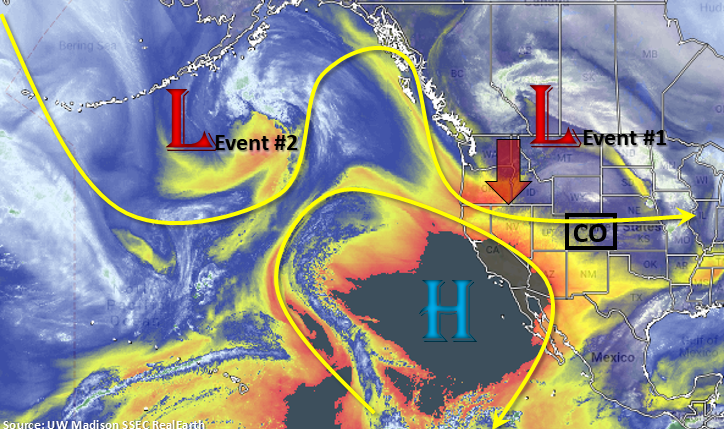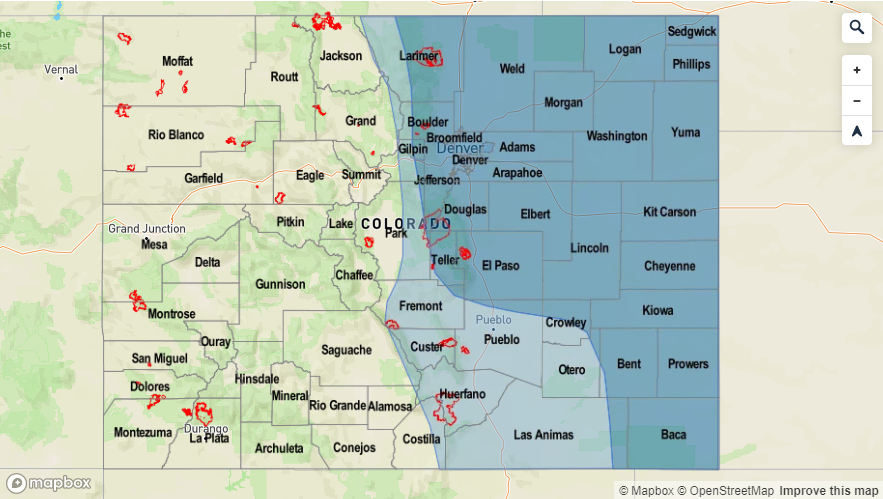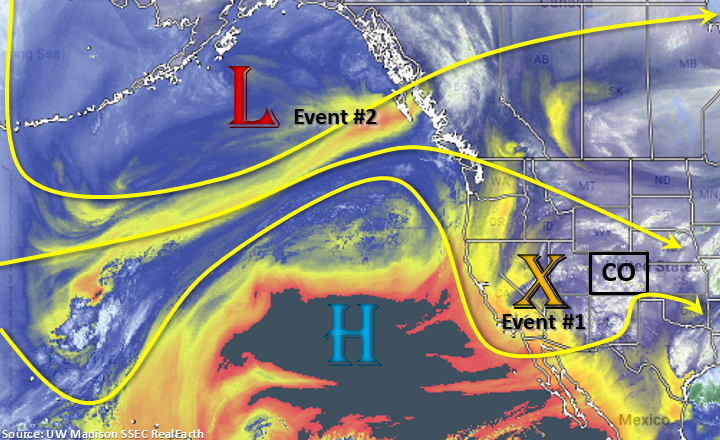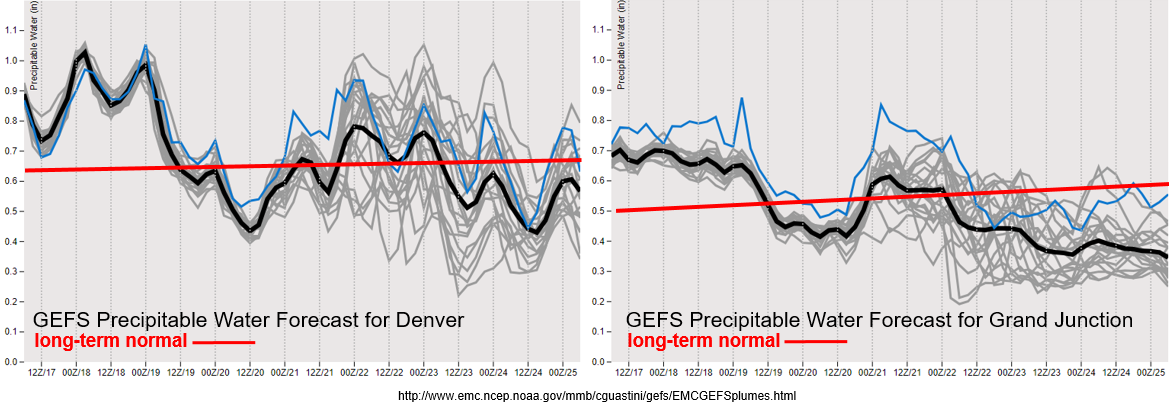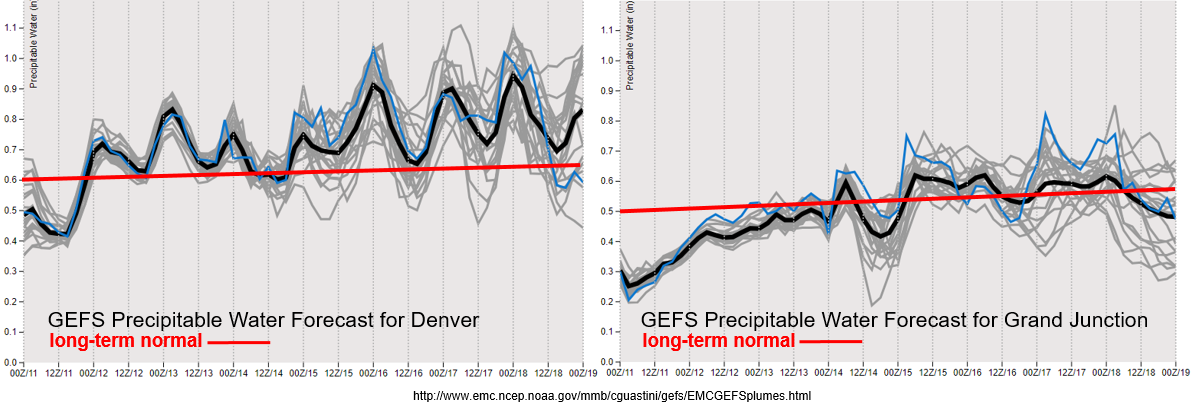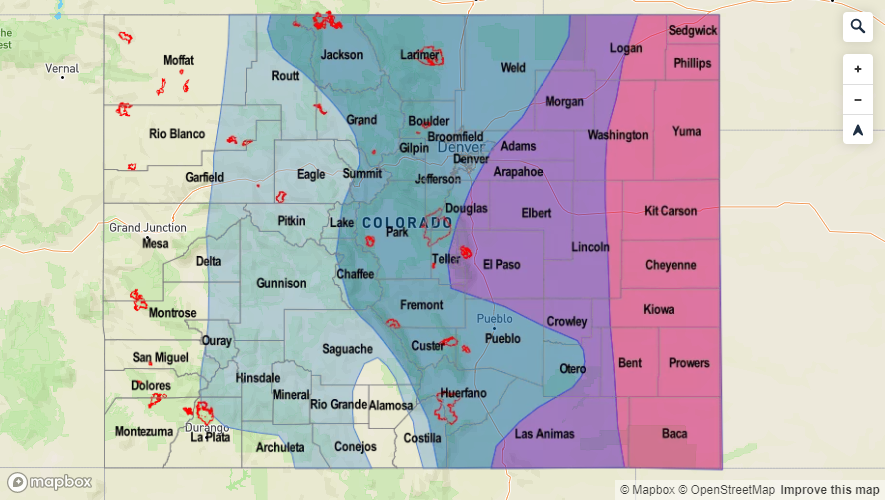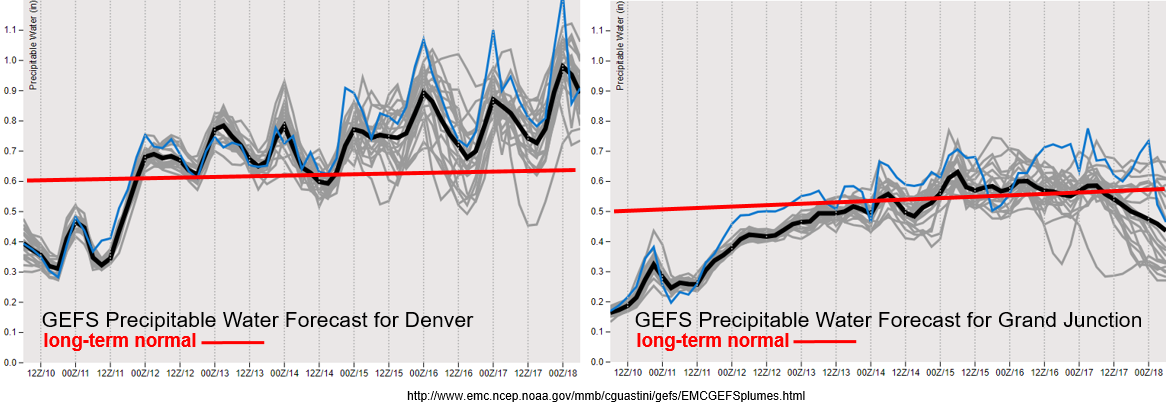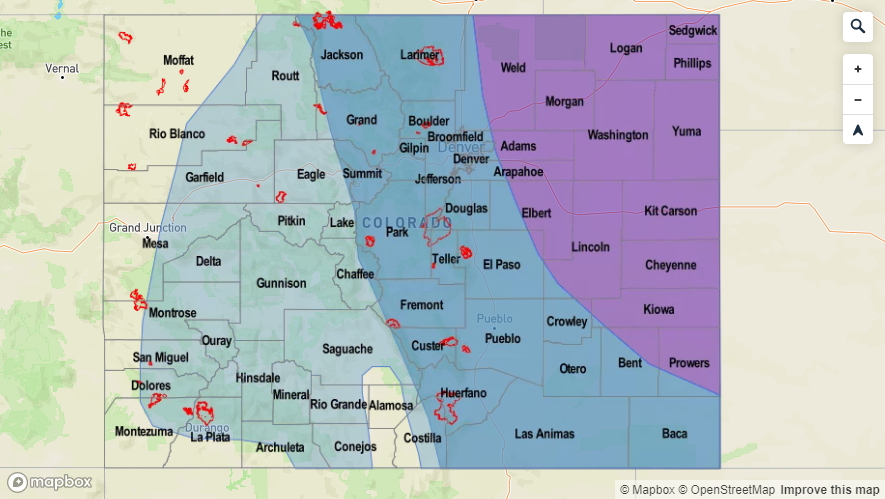Issue Date: Thursday, June 20th, 2019
Issue Time: 2:30PM MDT
Valid Dates: 6/21 – 7/5
An active weather pattern with some very cool temperatures is setting up for this weekend. Currently, a strong low pressure system is sitting to our north. This low will sag south into Nevada throughout today, which will start Event #1. Southwesterly winds with the upper low will continue through tomorrow, and the upper trough to our west will push a cold front through the state during the afternoon hours. With a surface low over eastern Colorado, high moisture will allow for some heavy rainfall and severe weather along the front. Northern Colorado will also sit in the right entrance region of the jet, which should promote some overnight rainfall in the mountains. Saturday morning will begin with cool temperatures, heavy cloud cover and isolated rainfall. With southwesterly flow and the trough beginning to move through the state, unsettled weather will be forecast again. If cloud cover can burn off to create some instability over the eastern plains, another round of severe weather may also be possible. Temperatures drop drastically by Saturday night into Sunday, so some snowfall may be possible over 10,000 feet this weekend. SNOTEL will be monitored closely to identify the freezing line for the FTB. By late Sunday, the trough should be fully east of the state. This will allow for the return of northwest flow, which will promote drying and warmer temperatures to start the work week.
While details this far out will likely change, Event #2 begins mid to the end of next week as the next trough moves over the Pacific Northwest. For this event, the polar jet looks to stay further north though some mid-level energy will likely make its way into the state as the system moves eastward. This will help increase coverage of storms during the afternoon hours. The placement of the ridge to our east and the trough to the west will determine how much low level moisture will be present to fuel the rainfall. Currently, the highest PW values look to stay east of our border, but this could easily change over the next week. After the system passes east on Sunday, a ridge begins to build back to the northwest, which should help dry out the lower levels of the atmosphere and produce the next lull in afternoon storm activity.
Quite the drop off in PW values between the last two systems. With southwesterly flow returning this afternoon, PW looks to increase statewide. This should cause an uptick in storm activity Friday and Saturday with slightly higher PW values predicted for eastern Colorado on Friday (Event #1). Thus, there is an Elevated flood threat with upper level dynamics also helping provide an environment favorable for severe weather. After Sunday, PW drops off to well below average statewide. With PW values around 0.3 inches over western Colorado throughout the week and a possible jet in the region by mid-week, fire conditions may be possible. This will be watched closely over the next week. A little higher moisture hangs on over eastern Colorado, but this will likely only provide fuel for some isolated, high-based thunderstorms during the afternoon hours favoring the high terrain with activity possibly spilling over into the adjacent plains with westerly steering winds. For Event #2 the spread in the PW values is too uncertain at this time. It is more likely that there be an increase in moisture over eastern Colorado with this pattern, but at this time there is No Apparent flood threat.
Snowpack:
Much cooler temperatures over this next FTO with the passage of a strong cold front will likely slow down and maybe even stall the melting at the higher elevations. The latest SWE estimates for the state are shown below. Most basins have less than 5 inches of SWE left at their SNOTEL stations with some higher values to the north over the North Platte and Yampa/White river basins. It will be possible for the SNOTEL stations over the south to approach or reach zero by the end of next week. While no new flooding is anticipated, an Elevated flood threat still exits as many rivers will remain in Action stage over the next few days. Emergency management continues to report nuisance lowland flooding for the areas in the Low flood threat today (see FTB). For the latest information on the snowpack melt out, please tune into the daily FTB, your local NWS office or track the River Forecast Centers streamflow forecast here: AHPS gages (scroll over gage for forecast)
Event #1: Friday (6/21) – Sunday (6/23)
Elevated Threat/No Apparent Threat as upper dynamics, a cold front and high PW combine for severe weather and heavy rainfall.
A surface low will pull in some high moisture over eastern Colorado tomorrow afternoon. With a cold front dropping through the state and stalling during the afternoon and evening hours, convection initiating along the front is likely. Currently, projected soundings are showing high CAPE values, backing winds and a nice cold layer in the middle of the atmosphere. This should support supercell development with storms capable of producing large hail, strong winds and a tornado or two. With dew points in the 50°Fs and steering winds at about 15 knots, heavy rainfall will also be possible. Trailing storms oriented from the southwest corner to the northeast corner of the state along the stalled front will also likely produce some heavy rainfall totals by Saturday morning. Severe weather may be possible again on Saturday if clearing is able to occur over the Southeast Plains early enough in the day. Otherwise, storms should be confined to the mountains. The tornado threat would decrease Saturday as well as the heavy rainfall threat with faster steering flows and lower PW values over the eastern plains.
Event #2: Wednesday (6/26) – Sunday (6/30)
No Apparent Threat a ridge to our east and trough to our west place Colorado under southwest flow returning thunderstorms to the forecast.
The atmosphere will dry out a bit after Event #1 for this FTO. Models hint at the next system moving into the area sometime at the end of next week. PW values look to increase as southwesterly flow aloft returns to the state, but there is little confidence in the forecast this far out. Should the trough set up to our west and ridge to our east, there will likely be an increase in moisture over the eastern plains. This would allow upslope flow to initiate more widespread storms over the mountains during the afternoon and possible shortwaves enhancing activity. Some hot temperatures would also be likely if the 5880m isobar can reach the northern border. With so much uncertainty in the forecast, there is No Apparent threat at this time. As always, tune back into the FTO on Monday for the latest details.

